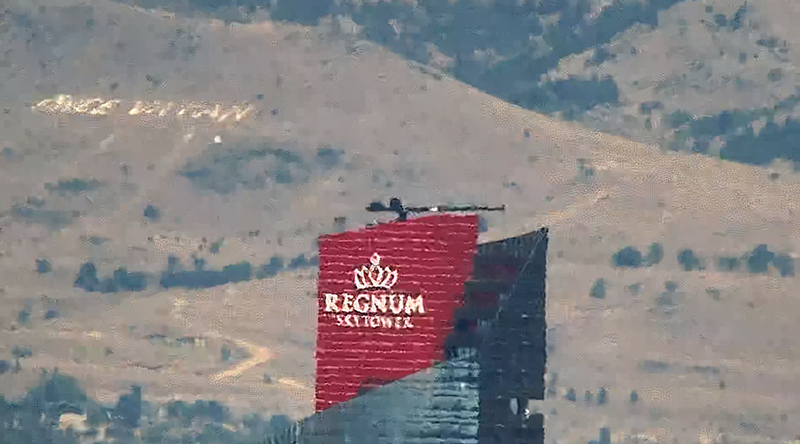Atmospheric Turbulence Mitigation
Most of us have seen a scene in Hollywood movies showing us a highway inthe middle of a desert. Audiences who is watching this scene will see a shakingair in the screen and this makes them to understand the weather should be reallyhot. We call the reason causing to let this scene exist as AtmosphericTurbulence. In imaging systems, atmospheric turbulence is a challengingproblem which is one of the most shattering distortion in long-distancesurveillance. These distortions become more destructive as the distance totarget increases. As a result; image quality is influenced negatively and duringimage processing applications input images coming from the sensor will beuseless. So common expression “garbage-in, garbage-out” works.

Example picture which is exposed to atmospheric turbulence
How does actually atmospheric turbulenceoccur ?
Atmospheric turbulence mainly occur due to temperature variations or aerosols.In situations when the ground is hotter than the air above it, the air is heatedand begins to form horizontal layers. When the temperature difference betweenthe ground and the air increases, the thickness of each layer decreases and theair layers move upwards rapidly, leading to faster and greater micro-scalechanges in the air’s refractive index. This effect is observed as a change in theinterference pattern of the light refraction.[1] We call this effect as atmosphericturbulence.
Where does atmospheric turbulence occur ?
Atmospheric turbulence actually exist everywhere having air, we just don’t feelit. However, we feel it heavily in deserts, hot roads, planet surveillance, andother long-distance surveillance.
What are the problems caused by atmospheric turbulence in imaging systems?
- Noisy sensor images
- Shifting pixels randomly
- Unstable distortions
- Distribution of distortions is not deterministic
- Unclear(blur) objects inside images
- Contrast corruption problems in long-distance surveillance
What’s in the world ?
In the worldwide, there aren’t many companies focusing on this topic. Thecompanies which have solutions, are using powerful hardwares on theirproducts. By the way, up to now there is no solution by hardware foratmospheric turbulence. However, they are demanding high frequency cameras,powerful computational hardwares from their customers in order to processmany instance input images to help their software. Of course this come up withexpensive bill, on the other hand these required hardwares are not easy to getbecause they are produced by couple of companies in the world and theircustomers are mainly defense industry so first of all, you must overcome thepolitical wall. As a result you can think about “The juice isn't worth thesqueeze” .
Our solution
As Yonga Technology Microelectronics, we developed a software solution by analyzing the latest technologies in the world. The solution we developed has the following capabilities:
- Easy installation steps
- Windows 7-10, Linux supported
- Sensitive to moving objects in background
- User friendly interface
- Embedded system option
- No need powerful processors ( > 1.8 GHz )
- No need high frame rate cameras ( > 25 fps )

References:
1. L. C. Andrews, R. L. Phillips, C. Y. Hopen, and M. A. Al-Habash,“Theory of optical scintillation,” J. Opt. Soc. Am. A, vol. 16, no. 6, pp.1417–1429, June 1999.
